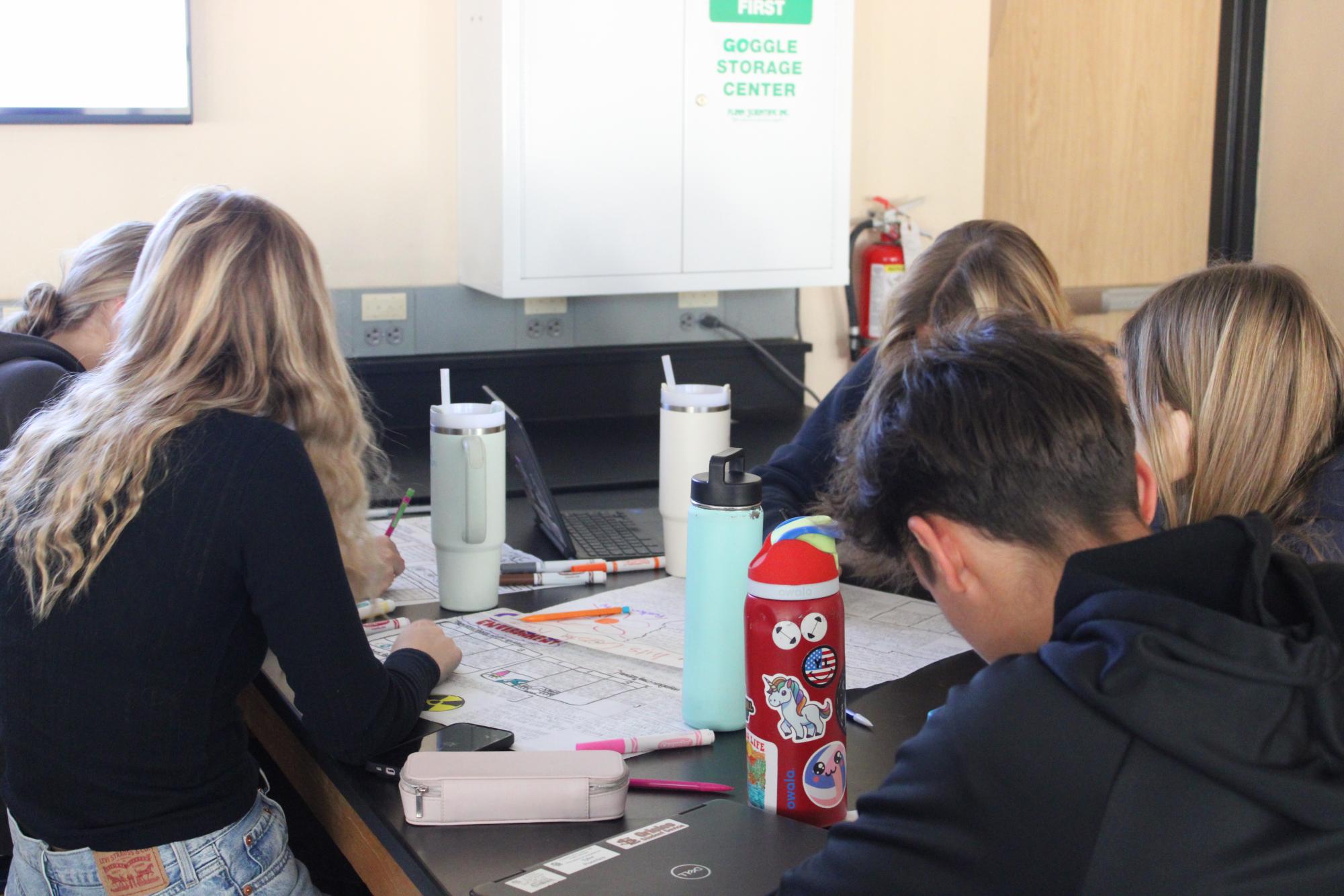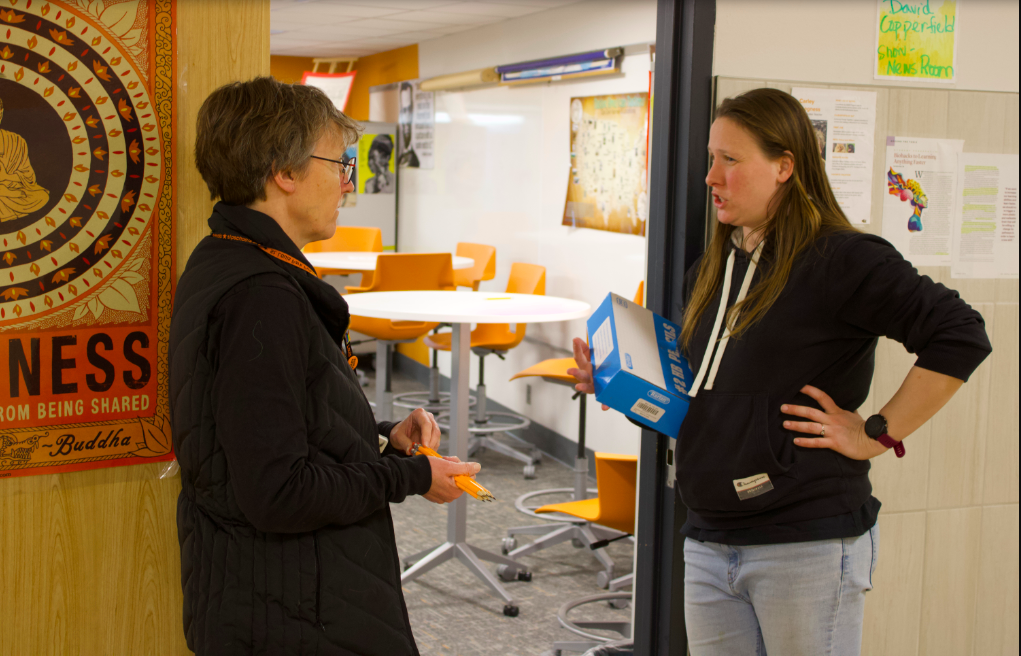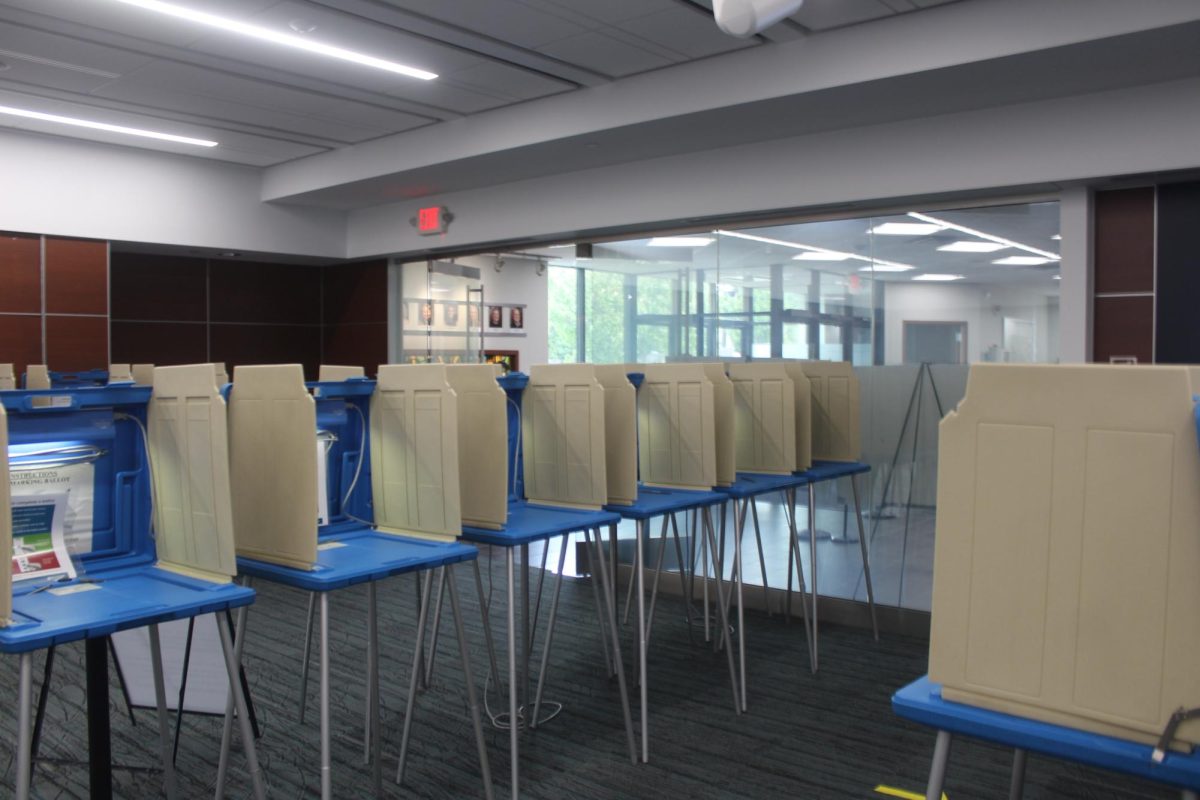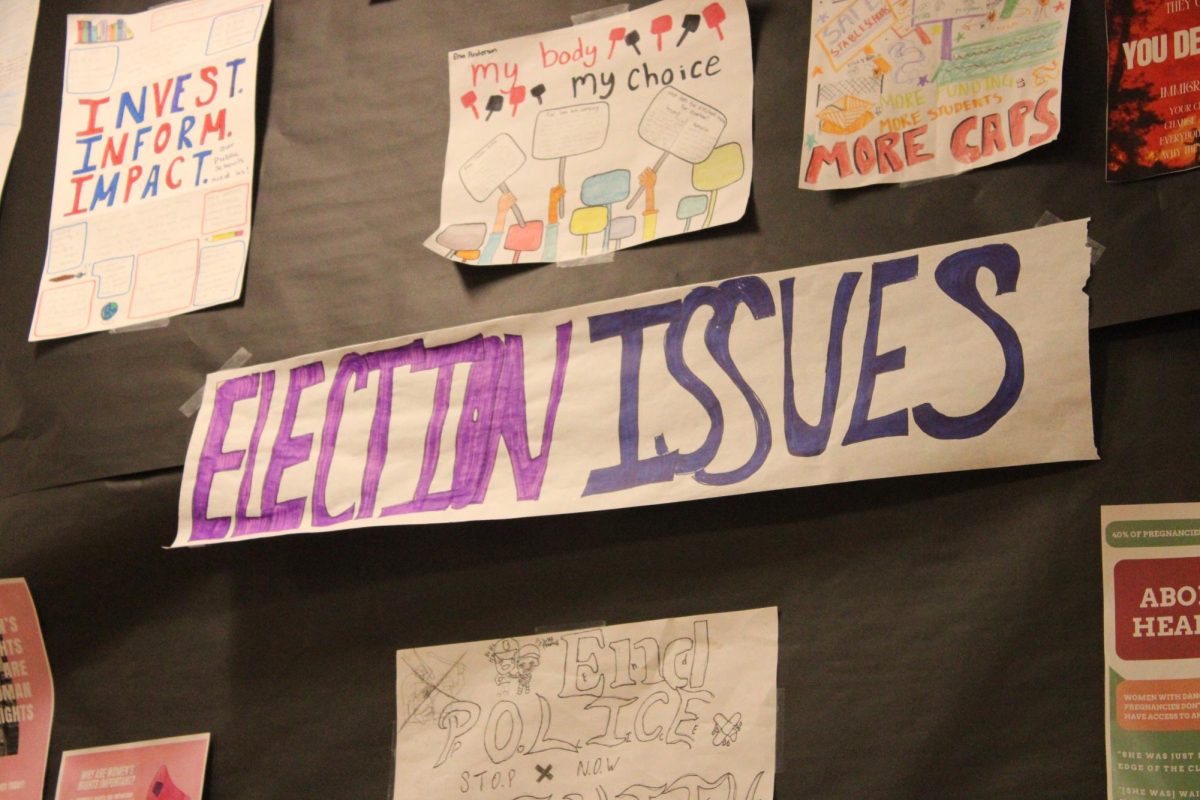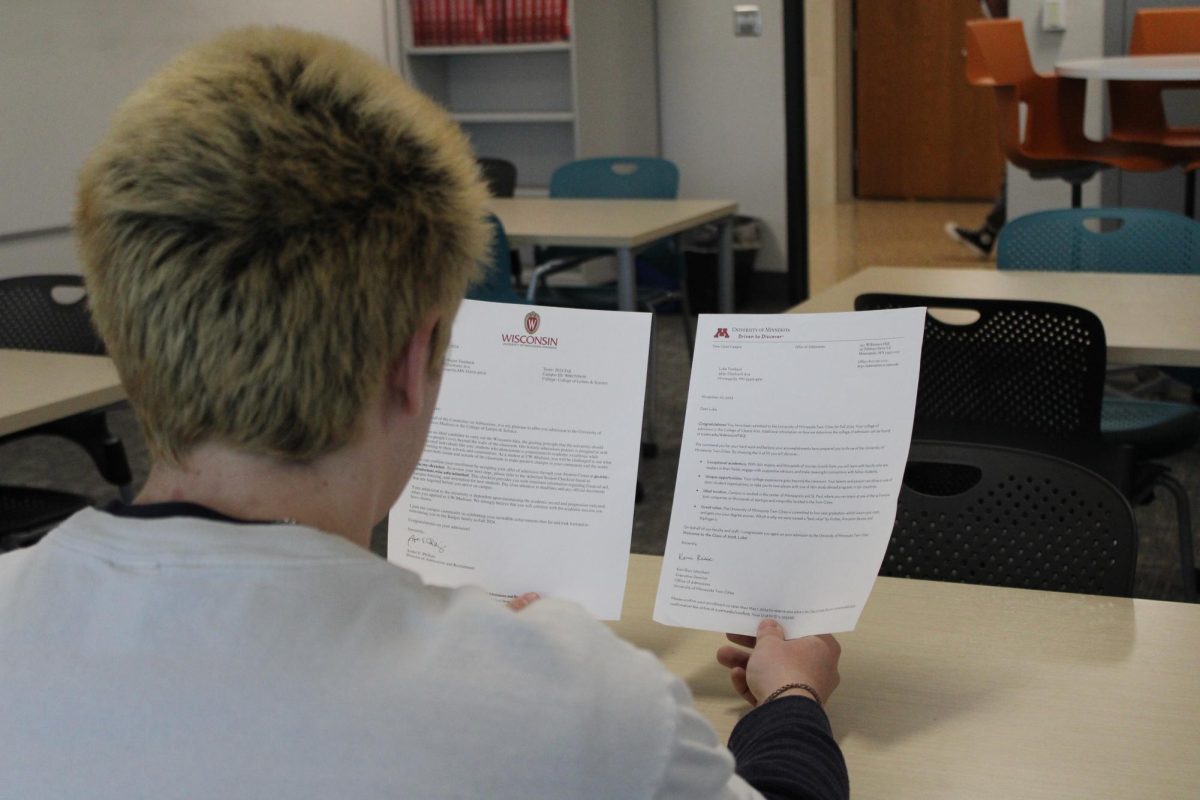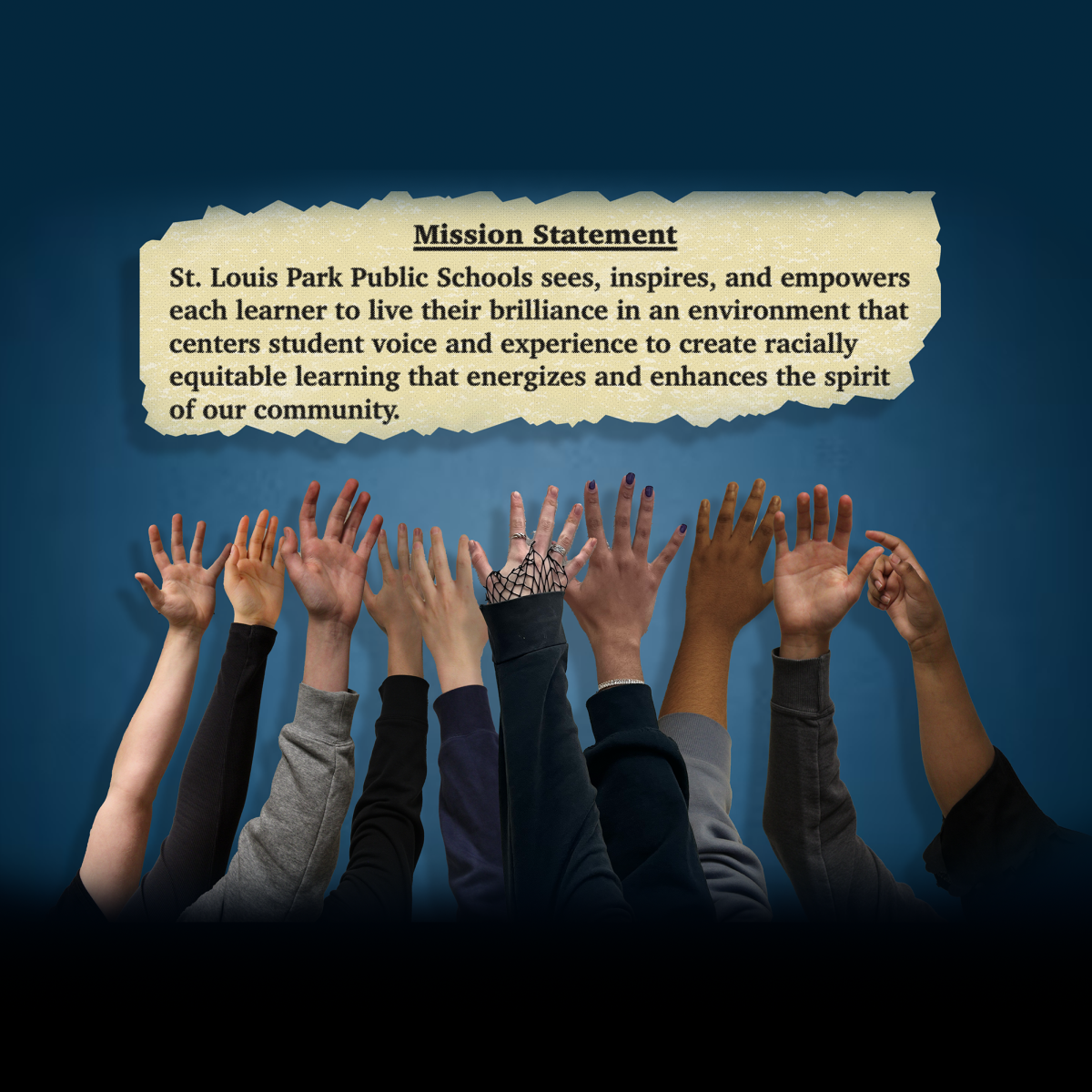Overconsumption consumes youth
Senior Janet Kromah said the constant change in trends makes products less genuine because there’s not enough time to enjoy them before the next trend pops up.
“(A trend) loses its genuinity, like its genuine charm. There are so many trends that happen so fast—like the rainbow blush trend,” Kromah said. “There are so many trends where (something) used to be a cool little hack, or it used to be something that people think they should try, but now people are just trying to find ways to create trends rather than find a genuine thing, and then it catches on, and then it is a trend.”
Junior Brenda Martinez Herrera said the reason for the constant change in trends is due to ever-changing beauty standards. According to Martinez Herrera, when something becomes trendy, consumers tend to buy it in a short period of time which translates to fast fashion.
“The reason why fast fashion comes and goes is because there’s always a change in beauty standards,” Martinez said. ”What’s popular often does connect to fast fashion because once we see it trending currently, right now, then we buy it. Then, once the period (has) stopped and we see new things come out, more people like emphasizing these styles, that kind of changes our shift in consumerism and then we just kind of let go of the old products and trends.”
Business teacher Abigail Lugo said due to fast fashion, there’s constant impulse buying on behalf of consumers. She said there’s a widespread feeling of social-exclusion when one doesn’t buy into a certain trend.
“Trends increase purchasing behavior because we see a lot more impulse buying,” Lugo said. “It’s better to be now and be on trend than it is to sit on the sidelines and say what it could have shown you. Companies are coming at us with lots of options that are low quality so that they can put that low price on because consumers will like to react to that quickly.”
“FOMO” or “the fear of missing out” is a feeling people experience when they feel left out of something. According to psychology teacher Emily Rennhak, FOMO impacts how students feel when they are not up on the latest trends.
“FOMO is psychologically backed. We just want to be a part of things,” Rennhak said. “Humans are very social creatures, so if you feel like you can’t keep up with the trends, you aren’t a part of it, that’s going to cause a lot of mental health concerns. Not being connected to people is linked to depression, anxiety and obviously we’re seeing a lot of those rates of mental health or depression and anxiety rising in teens.”
According to Kromah, buying a product just because it’s a trend isn’t something she will do. She said if a product is trendy and she dislikes it, she won’t purchase it.
“I will occasionally buy something if I think it’s a cute thing and it just so happens to be trending but I won’t buy something just because it’s trending. If I think it’s ugly but I see it’s trending, (then) I’m not going to buy it because I feel like that’s a waste of my money,” Kromah said. “I will very rarely indulge in trends like that if I dislike them, because I feel like most people only indulge in them because it’s trending.”
TikTok released a shopping platform referred to as “TikTok shop.” The shop started as a tab on the app where users could buy items they were interested in and businesses could advertise their products. TikTok Shop then began to use their main streaming page on the app, For You Page, to advertise products.
Kromah said with the rise of TikTok Shop ads, the app has become different to what it was initially used for. Kromah said TikTok used to be for content, but there has been a transition to monetization.
“TikTok genuinely used to be a place for creators to push the content that they want, such as dancing or fashion, but it slowly turned into this place for just marketing and ads. Every other video that you scroll past, it’s going to be a TikTok Shop ad or an ad trying to be subtle,” Kromah said. “It’s always going to be something of the sort trying to push you to buy something. I feel like it’s very disingenuous to what Tiktok was originally for.”
Martinez Herrera said there’s a connection between the rise in consumerism and TikTok Shop, and it all links back to social media and the increase of engagement between teens and fast fashion purchases.
“TikTok is one of the mainstream social media platforms that is used with our generation. By promoting ads, like a fast fashion ad or any type of consumerism on TikTok is what connects with people and influences what people buy,” Martinez Herrera said.
Cosmetologist and independent contractor Brianna Hinz said TikTok Shop contributes negatively to beauty standards due to how accessible and simple it is.
“The TikTok Shop specifically contributes to (beauty standards and its negative impacts) in several ways. It’s so simple to purchase from and it’s also something where they are trying to make it seem as easy and cheap as possible to get the products,” Hinz said.
Senior Amina Omar said the push of TikTok Shop ads doesn’t feel genuine and lack originality.
“(TikTok Shop ads) get to a point where people are just doing it for the money. They’re not really like being authentic about what they sponsor on their pages and what they’re promoting to their audience,” Omar said.
According to Hinz, influencers’ popularity contributes to the mass amount of products that they can sell and encourage consumers to indulge in due to their fame.
“There’s the fact that influencers on TikTok are kind of just like idealized, so people are more likely to get products if they see that famous people are using them,” Hinz said.
Kromah said although the trends are constantly changing, there is a trend cycle of similar concepts that lack originality.
“It’s usually the same trend repackage. There was the squiggly eyebrow trend, and then it turned into the soap brow trend, and now it’s turned into the eyebrow gel trend,” Kromah said. “But all of them are just playing with your eyebrows and wasting product.
According to Martinez Herrera, social media platforms have a distinct impact on trends. She said not only do trends impact the general population, but celebrities as well.
“Trends aren’t just followed by regular people, but by influencers as well—celebrities also emphasize those trends,” Martinez Herrera said. “By seeing them showing tutorials, for example, makeup, clothes or style. I feel like fashion also plays a big role in trends as well and how quickly they change.”
According to Hinz, the fluctuation in trends is evident in her clients due to their requests often stemming from social media. Hinz said the rapid change in what is in and out stands out to her in what her clients ask for.
“Because of social media, a lot of young people are being influenced and buying the products that they see online,” Hinz said. “What they’re seeing online is just being deemed as beautiful so they’re just deciding to come in and ask for that. I’ve seen a lot of girls bring in their social media pictures and ask for me to do their hair like that because it’s cool, and it’s what’s trending. Seeing how social media impacts my clients is interesting.”
Omar said seeing trends on TikTok affects her but not in a negative way. She said she finds inspiration in trends and uses it to her benefit.
“The beauty standards on TikTok don’t negatively affect me, I just see them,” Omar said. “With makeup trends, I like to try new makeup and styles, but it doesn’t bring down my self-confidence or self-esteem about my looks.”
Hinz said keeping up with different kinds of people on social media can have a positive impact when it comes to showing what is trending in a healthy way.
“Whatever is out on social media is always what’s ‘in’,” Hinz said. “People always like to follow that so they can feel a part of the crowd and we can see that in what is popular and what people deem as beautiful or not beautiful. When on social media it’s important to follow all kinds of people and just know that all beauty goes and is valid.”
Rennhak said by setting boundaries, it is possible to avoid falling to the pressures of media consumption and build more sustainable consumeristic habits while also trying to prevent the new beauty pressures.
“Knowing about how neuroscience works, taking the steps ahead of time to set really clear boundaries with yourself, using the time limits on apps and sticking to the time limits, that’s one way to still engage in pop culture and media consumption while also not falling into this never-ending loop,” Rennhak said.





